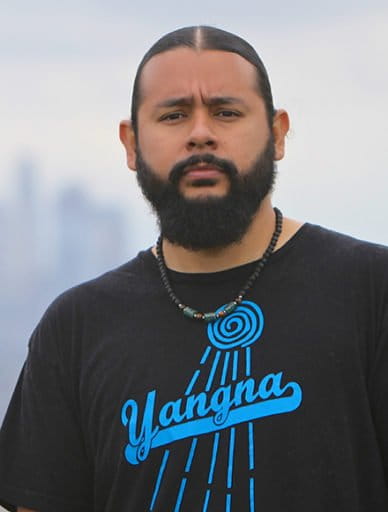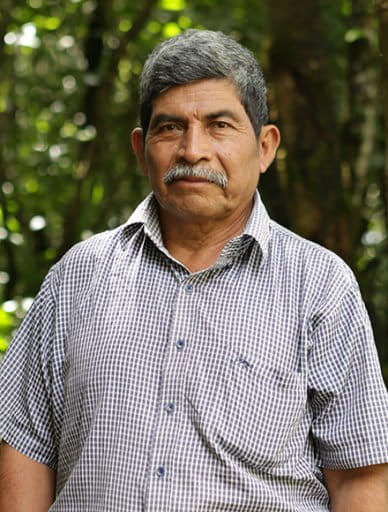- The Goldman Environmental Prize, dubbed the Green Nobel Prize, honors grassroots environmental heroes from Europe, Asia, North America, Central and South America, Africa, and Islands and Island nations.
- The winners will be awarded the Prize today at the San Francisco Opera House.
- The winners include Uros Macerl from Slovenia, Prafulla Samantara from India, mark! Lopez from the United States, Rodrigo Tot from Guatemala, Rodrigue Mugaruka Katembo from DRC and Wendy Bowman from Australia.
The world’s most prestigious award for grassroots environmental activism has announced its winners for 2017.
Every year, the Goldman Environmental Prize, dubbed the Green Nobel Prize, honors grassroots environmental heroes from Europe, Asia, North America, Central and South America, Africa, and Islands and Island nations.
This year’s winners include activists who went undercover to expose corruption, indigenous leaders who fought for the rights of their communities and took on big destructive development projects, and activists who strove to achieve safe environments for their communities, often at great personal risk.
The winners will be awarded the prize today at the San Francisco Opera House, followed by a ceremony at the Ronald Reagan Building and International Trade Center in Washington, D.C. on April 26.
Here are the winners of the 2017 Goldman Environmental Prize.
Uroš Macerl (Slovenia)

In 2003, Lafarge Cement, one of the world’s largest cement companies, took over a 130-year-old cement plant in Trbovlje in Slovenia and began burning petcoke, a carbon-rich byproduct of the oil refining process. Worried that the pollution from the cement plant was making water unpotable and soil infertile, Uroš Macerl, an organic farmer and president of a local environmental group, who lived on the outskirts of the Lafarge plant, got together farmers, residents, and local groups in his community to collect air quality data. He found that there had indeed been a sharp rise in pollutants since Lafarge had begun burning petcoke.
When Lafarge, in 2009, applied for an environmental permit to co-incinerate hazardous industrial waste with petcoke, Macerl filed and won a lawsuit that canceled the permit. But when the company continued to burn petcoke and waste, Macerl organized protests and rallied community opposition until the plant was ordered to shut down in 2015.
Prafulla Samantara (India)

In the state of Odisha in India, an 8,000-year-old indigenous tribe, the Dongri Kondh, lives in the Niyamgiri Hills, a forested region rich in biodiversity. The tribe considers the Niyamgiri Hills to be sacred, and see themselves as its protectors. But for many years, the tribe has been at loggerheads with the Odisha State Mining Company (OMC), which in 2004, signed an agreement with UK-based Vedanta Resources to mine bauxite, an aluminum ore, in the hills.
Prafulla Samantara, a social justice activist who grew up in a family of farmers, has fought for the rights of the Dongri Kondh for more than 12 years. He rallied the tribe to make their voices heard about the Vedanta mining project proposed on land they had called home for years, and filed a petition with the Supreme Court to halt the mine. In May 2016, the Indian Supreme Court denied a petition from the OMC that sought to overturn the tribal council votes and to mine the bauxite as a sole venture.
mark! Lopez (United States)

In 2000, Georgia-based Exide took over an old battery recycling plant in Los Angeles, and increased the volume of batteries being processed at the plant. Emission levels of pollutants such as lead and arsenic are believed to have skyrocketed as a result. Following an investigation by a federal grand jury about its operations, Exide agreed to shut down the plant but nobody seemed to address the contamination beyond the smelter site.
mark! Lopez, born in a family of activists in Los Angeles, went door to door to inform the community about the dangers of lead contamination, and rallied the residents into pressuring the California Department of Toxic Substance Control (DTSC) to test homes around the smelter site. When the tests showed that most homes were contaminated and required remediation, Lopez and his team persuaded the state of California to approve $176.6 million for the testing and cleanup of affected homes.
Rodrigo Tot (Guatemala)

In 2006, the Guatemalan government issued a permit to restart the Fénix mine, a nickel mine that had once been operational between the 1960s and 80s. The indigenous Q’eqchi people who lived around the mine claimed that the company was forcibly removing them from their land without their consent.
To find out if the community had legal claims to the land, Rodrigo Tot, an indigenous leader in Guatemala’s Agua Caliente, spent years gathering evidence of Q’eqchi’s land ownership. Then, based on the evidence he collected, Guatemala’s Constitutional Court, in 2011, ordered the government to issue land titles to the people of Agua Caliente.
The battle over land ownership is ongoing, but Tot and the community continue to fight for land titles of the indigenous peoples.
Rodrigue Mugaruka Katembo (Democratic Republic of Congo)

In 2010, the Democratic Republic of the Congo allowed SOCO International, a British oil company, to explore for oil in an area that extends into Virunga National Park. Virunga is Africa’s oldest national park and a UNESCO World Heritage Site.
When 41-year-old Congolese park ranger Rodrigue Katembo was offered money by SOCO to let their vehicles pass through Virunga National Park to set up an oil exploration base by the river, he decided to look into their dealings. Together with the park director, Emmanuel De Merode, Katembo began to document evidence of corruption by SOCO, its contractors and others. Katembo even used undercover cameras to record footage of SOCO and its contractors offering bribes and discussing illegal activities.
His footage were featured in the documentary film Virunga that became hugely popular through Netflix and generated international outrage over SOCO’s conduct in Virunga. The Church of England, in 2016, announced it would divest its $1.8 million holding in the company, and a few months later, SOCO announced it was giving up its oil license. Katembo continues to to protect Virunga and its wildlife from poachers, militia, and extractive industries.
Wendy Bowman (Australia)

Nearly two-thirds of Hunter Valley in New South Wales (NSW), Australia, has been given away in coal concessions, producing 145 million tons of coal every year. As a result of the widespread coal mining, countless landowners have moved. And for those who remain, coal dust has become a part of their lives, affecting their homes, farmlands, water sources and health.
But the now 83-year-old Wendy Bowman, one of the last residents left in Camberwell, a small village in Hunter Valley surrounded by coal mines, managed to take on a powerful multinational mining company and stopped it from taking her family farm and protected her community in Hunter Valley from further pollution and environmental degradation.
